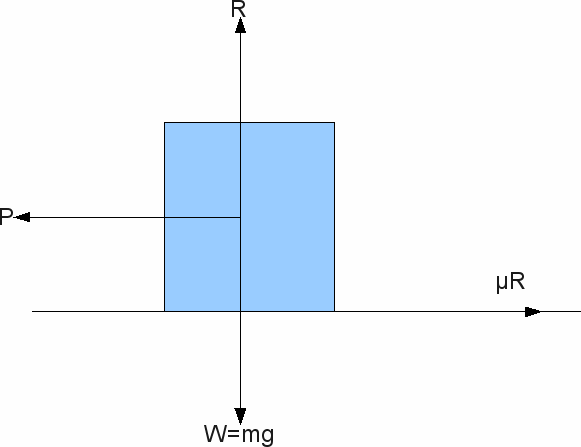Friction is always there. There is no such thing as frictionless. To say something is smooth is always an ideal situation. The force of friction between two bodies depends on the two bodies, and the contact or reaction force between them. It may increase up to a limiting value, limiting friction., the maximum force of friction between two bodies. We may assume a linear relationship between the maximum force of friction and the contact force, with the constant of proportionality given the name 'coefficient of friction' and the label![]() The body in the diagram below is in limiting equilibrium. If the force P increases any more the body will move to the left. If the force P decreases the force of friction will decrease from %mu R to a lesser value.
The body in the diagram below is in limiting equilibrium. If the force P increases any more the body will move to the left. If the force P decreases the force of friction will decrease from %mu R to a lesser value.

As shown on the diagram above, the reaction or contact force R is always perpendicular to the contact surface of the two bodies and the friction force always acts along the contact surface between two bodies. Friction always acts to oppose motion so if the force P is reversed so is the force![]()
If we resolve vertically for the diagram we get
![]()
Resolving horizontally gives![]()
